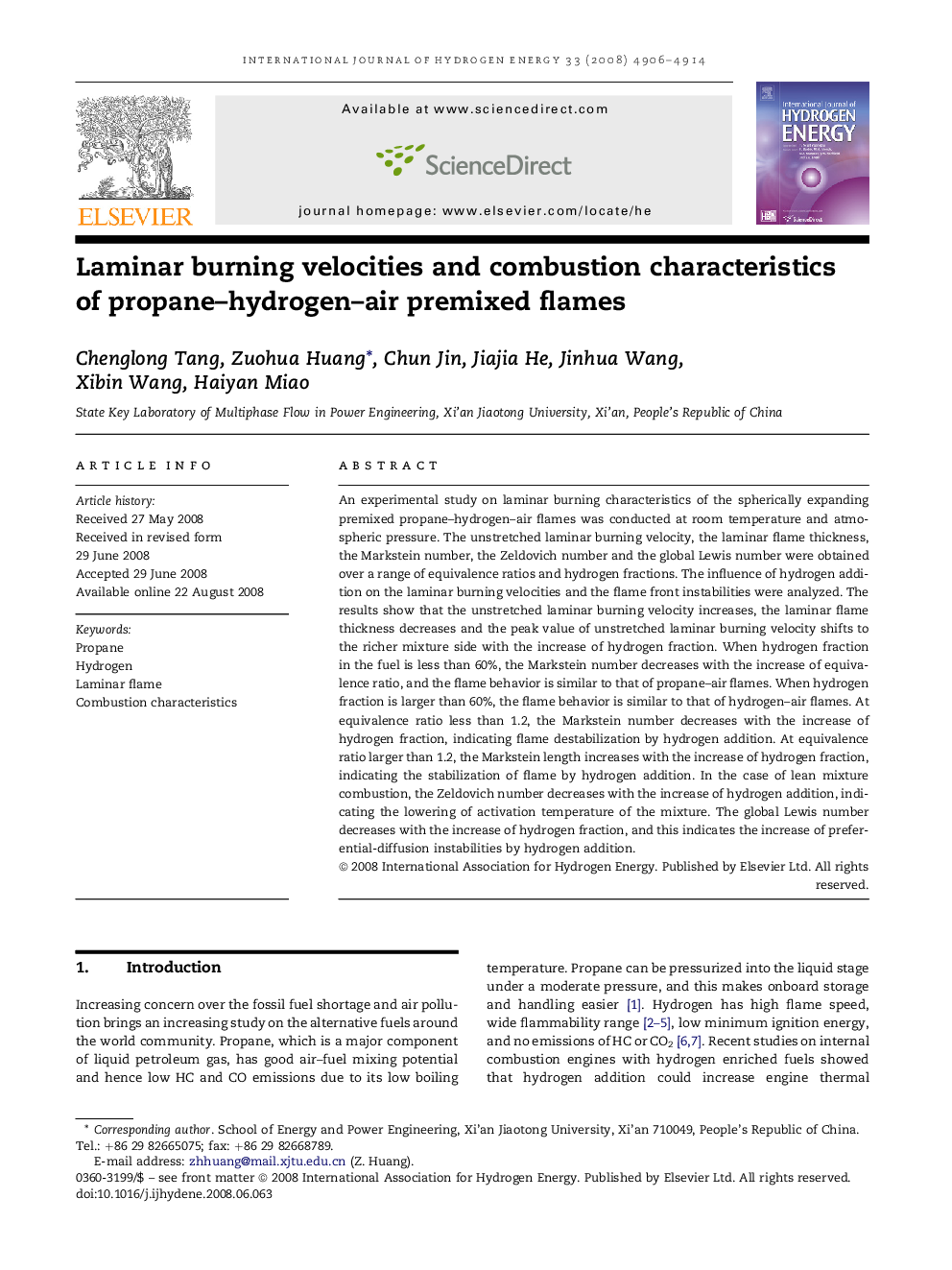| Article ID | Journal | Published Year | Pages | File Type |
|---|---|---|---|---|
| 1279233 | International Journal of Hydrogen Energy | 2008 | 9 Pages |
An experimental study on laminar burning characteristics of the spherically expanding premixed propane–hydrogen–air flames was conducted at room temperature and atmospheric pressure. The unstretched laminar burning velocity, the laminar flame thickness, the Markstein number, the Zeldovich number and the global Lewis number were obtained over a range of equivalence ratios and hydrogen fractions. The influence of hydrogen addition on the laminar burning velocities and the flame front instabilities were analyzed. The results show that the unstretched laminar burning velocity increases, the laminar flame thickness decreases and the peak value of unstretched laminar burning velocity shifts to the richer mixture side with the increase of hydrogen fraction. When hydrogen fraction in the fuel is less than 60%, the Markstein number decreases with the increase of equivalence ratio, and the flame behavior is similar to that of propane–air flames. When hydrogen fraction is larger than 60%, the flame behavior is similar to that of hydrogen–air flames. At equivalence ratio less than 1.2, the Markstein number decreases with the increase of hydrogen fraction, indicating flame destabilization by hydrogen addition. At equivalence ratio larger than 1.2, the Markstein length increases with the increase of hydrogen fraction, indicating the stabilization of flame by hydrogen addition. In the case of lean mixture combustion, the Zeldovich number decreases with the increase of hydrogen addition, indicating the lowering of activation temperature of the mixture. The global Lewis number decreases with the increase of hydrogen fraction, and this indicates the increase of preferential-diffusion instabilities by hydrogen addition.
